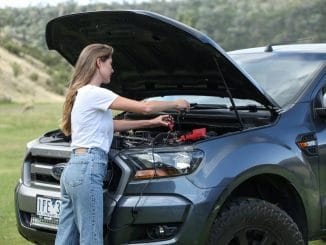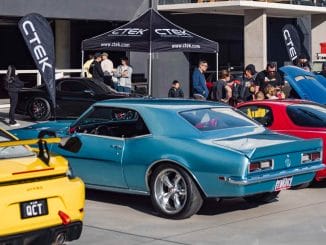CTEK – According to data from the Australian Bureau of Statistics (ABS), more than 40 percent of employed people have been regularly working from home*.
 Our post-pandemic stay-at-home lifestyles are putting extra stress on car batteries, meaning the need for a battery recharge due to different driving conditions is on the increase according to CTEK, the leading global brand specialising in the care and maintenance of vehicle batteries.
Our post-pandemic stay-at-home lifestyles are putting extra stress on car batteries, meaning the need for a battery recharge due to different driving conditions is on the increase according to CTEK, the leading global brand specialising in the care and maintenance of vehicle batteries.
With fuel prices and the general cost of living increasing rapidly, many drivers are looking at ways to save money and make their budgets stretch further.
CTEK has some tips for motorists with saving money at the top of their minds.
-
What is draining your battery?
Drivers are taking fewer, shorter journeys, particularly in urban areas, which quite quickly drains a car battery. It takes 150-350A of battery power just to start the car, and on short trips the alternator won’t have the time or capability to replace this charge. Over several short trips, your battery will soon be flat. Even while your car is parked, your battery loses 0.1V of energy every month and, if your car is also running an alarm system, onboard computer, remote locking etc, the continual drain on the battery will be much more than that. Driving around in your car will only ever charge your battery to 80% capacity so, to top it up to 100%, you’ll always need a battery charger. Consistent battery charging actually increases your battery’s life up to three times, saving you hundreds of dollars on replacement batteries.
-
A drained battery is bad news
There is a very fine line between a fully charged battery and a dead one, and even a small drop in charge can compromise battery health, reducing its life span and making replacement necessary. A car battery is fully charged at 12.72V. Below 12.4V, sulphate crystals can build up, degrading the battery and reducing battery capacity. And below 10.4V, the battery won’t start the car at all. Battery failure can also damage or compromise a vehicle’s electronics, which could be even more costly.
A CTEK MXS 5.0 value pack retails at less than $200 and comes with an eyelet kit, allowing you to simply connect the battery charger to your car. When you consider that a vehicle battery costs between $150 – $400, you can quickly see how a single battery replacement alone will likely cover the initial investment in the battery charging equipment.
-
Charging is not as expensive as you think
Power bills are also set to rise for many Australians from the start of the next financial year in July. While exactly how much depends on which state you live in and which energy provider you’re with*, Australians are preparing by planning their resources accordingly.
CTEK has some good news – charging your battery does not cost as much as you think and is a good investment in the long run. Our European team worked out the costs below. CTEK has calculated that, using an MXS 5.0 battery charger it takes less than one kWh to get a half empty 12V, 75Ah battery fully charged (assuming battery power efficiency of 85% and charger efficiency of 85%). At the moment, a kWh of electricity costs between 25 and 40 cents in Australia, depending on your state and electricity tariff. This means you can charge your battery for the same cost as watching TV for 5 hours, and for less than it would cost you to cook in an electric oven for an hour, play on game console for three hours or do two loads of laundry!
-
Extending battery life with maintenance charging
Paul Oddy, Regional Sales Manager for APAC at CTEK, said: “Today’s vehicles are electronically sophisticated. Everything from door locks, heated seats and steering wheels, to air conditioning and adjustable driving positions rely upon electronics, increasing the demand on batteries. Short trips to collect groceries don’t give your car’s alternator enough time to fully recharge the battery, and when coupled with long periods of vehicle inactivity, sulfation can occur, ultimately leading to battery problems.
“Charging your car battery at least once a month prolongs its life by up to three times, so buying a reliable battery charger, and getting yourself into a regular battery maintenance routine, makes perfect sense. And, as battery failure can damage or compromise a vehicle’s electronics, a charger is most certainly a worthwhile investment.”
The MXS 5.0 uses CTEK’s patented float/pulse system, which is the most efficient maintenance mode when a battery is connected for long periods. It includes battery diagnosis to establish whether your battery can receive and retain a charge, patented automatic desulphation program, an AGM option which maximises the performance life of most stop/start batteries and a special ‘Recond’ mode for reconditioning deeply discharged batteries.
A hefty bill for vehicle repairs, recovery and battery replacement is the last thing you need when you’re focused on making your household budget stretch that little but further. But regular battery charging can help keep your battery in tip top condition and avoid that unwelcome dent in your wallet.
For further information on the complete range of CTEK chargers and accessories, visit www.ctek.com.






